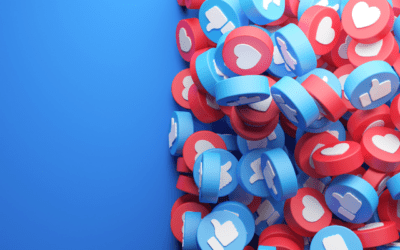Is your brand messaging in need of an update?
Your brand messaging is directly linked to lead generation. Wondering how? Your messaging helps prospective buyers figure out if your product and company is the right choice for them. This is why most businesses spend considerable time pinpointing the exact messages they will convey.
Once the messaging is set, a business can move on to other issues, right? Wrong. There are situations—perhaps more than you’d expect—when your brand message deserves an update. Let’s dig in.
What is brand messaging?
Brand messaging refers to a set of phrases that communicate what you’re offering. In a quick scan, they articulate product/service category, points of difference and key benefits. In a nutshell, this messaging helps buyers understand why they should choose to buy from you rather than your competitors.
Taglines or slogans are one of the most obvious aspects of brand messaging. When you hear the phrase, “Just do it.”, you think of Nike. Taken a step further, you might think about dedication, ambition, and competitive spirit. These associations are intentional. Similarly, 3M’s slogan is “Science. Applied to life.” and their personality traits are reportedly: free thinking and creative; sharing and trusting; fascinating; high-energy, optimistic and confident.
According to recent research, messaging that’s focused on features, functions and business outcomes results in a 21% increase in perceived brand benefits, on average. Compare this to messaging focused on social and emotional benefits, which boosts results by 42%.
It may surprise you to hear that new messaging can be developed pretty quickly. At Hop Skip Marketing, we get all of the key stakeholders together in front of a whiteboard and develop it as a group in a few hours. The beauty of this type of approach is that you have buy-in, and the leaders of all the impacted functions appreciate how the messaging was developed.
Do’s and Don’ts of developing your brand messaging
DO: Convey what you offer and which category you are in.
DO: Articulate what makes it different (better) from the other options buyers will be considering.
DO: Compare your draft messaging to that of your competitive set to ensure you aren’t saying the exact same things they are. (Remember, you are trying to help buyers understand why they should choose to buy from you.)
DO: Quantify your messages to make them more believable. For example, citing “deep experience” is not as compelling as “25 years’ experience and 22,000 customers served”.
DO: Test messaging with a sample audience before launching.
DON’T: Promise things about your product that aren’t true today. Misleading promises can quickly tarnish a good reputation.
DON’T: Hang your hat on things that your buyers don’t value.
DON’T: Launch your messaging without first introducing it internally and explaining why you have settled on this particular set of messages.
Rolling out brand messaging
Brand messaging goes well beyond your website. It should be used frequently and consistently inside and outside of your organization. And it should be known by everyone at the company from your CEO to your front desk employees. Seem like overkill? Not at all. We just finished rolling out brand messaging for a client. During the workshop to develop their messaging, the management team agreed that their overall customer service and production process are par-none. We explored all the ways this is true throughout their process, including a 10-step quality program. In the end, we landed on the tagline “Exception. Every step of the way.” with sub messaging such as having a 10-step quality program for product excellence. Before taking this messaging public, we first rolled out with the sales and production teams, then to the entire company in an all-company townhall. Not only did we explain all of the messaging and how each department would ensure it is living up to these public promises, we also showed them how it would position us ahead of the competitors who had nothing like this. Just last week, the production team started moving a 10-step checklist along with each unit to ensure the team signs off on each step as it is completed.
Once internalized, it’s time to take your messaging public. Plan to update as much (if not all of) your public-facing collateral as you can at launch time. If this isn’t feasible, create a rollout plan.
Reinforcing your messaging with imagery and colour
Visual elements like images, colours and fonts are often used to reinforce brand messaging. For instance, many companies whose Canadian ownership is a key differentiator include “100% Canadian” or “Canadian owned and operated” into their messaging. This is often reinforced by Canadian imagery or symbols, and a brand colour palette that includes red. This is the approach we took with one of our clients who is in a category alongside many US-owned companies.
Messaging should be reinforced through experiential aspects too, like customer service, hiring, and corporate policies. For example, if a company hangs its hat on being the category leader for innovation, a slick up-to-date website designs with best-in-class user experience would make their messaging much more believable. Or, if a company says they treat customers like gold, all departments should have set ways that make that happen, like responding to inquiries within 15 minutes, or sending a gift if the service is in some way sub-par (ever received a free Starbucks drink because they messed up the order or took too long?).
Does your brand message need a review?
Once rolled out, a brand message can seem immovable—and indeed, a great message will resonate over time. But there are several events in the lifetime of a brand that should trigger a message review.
Introducing a new innovation
When there are new innovations in your sector you should schedule a messaging review to ensure that you remain relevant and at the forefront.
When you do a rebrand or refresh
Brand elements like design and logos should be refreshed periodically. If you are shifting to demonstrate new personality traits or to resonate with a different buyer group, your messaging may need tweaking.
During a new product launch
When introducing a new product, you will need to develop messaging for the product line and buyer. This work should include an audit of the competitors’ product messaging.
Entering a new market or when there’s a shift in the market
Reviewing your overall messaging when entering a new market is crucial. Perhaps less obviously, it’s a great time for review if there has been a change in competitor activity, an economic shift, or a change in consumer buying behaviour in your existing market. If you are in an industry that’s growing, you’ll have to revisit messaging and position frequently.
When developing your annual marketing plan
Times change, which is why each year you need to engage in strategic marketing work. Consider a messaging and brand review (your messaging and that of your top competitors) as part of that work.
Your brand messaging checklist
There are numerous opportunities throughout the year to check your messaging, but what should you be looking for? Here are the three important questions to ask:
1. Does your core messaging offer anything different from your competitors?
Be honest! If your messaging has become repetitive or indistinct, it’s time to reach for something new to differentiate yourself.
2. Do your messages reflect reality?
Your brand messaging might be excruciatingly clever, but if it doesn’t reflect reality it won’t land the way you want it to. Make sure your communications are grounded.
3. Do your messages still resonate with your target audience?
Changes in products or price point, new competitors, or shifts in customer behaviour can all affect your business landscape. Review your target audience, and make sure your messages still resonate. A customer survey is a great way to do this.
Your company works hard to create relevant, resonant brand messaging. Don’t let the effort go to waste. Keep an eye on industry trends and take advantage of the natural opportunities for review that arise throughout the year. Regular brand messaging checkups can help you grow and prosper.


